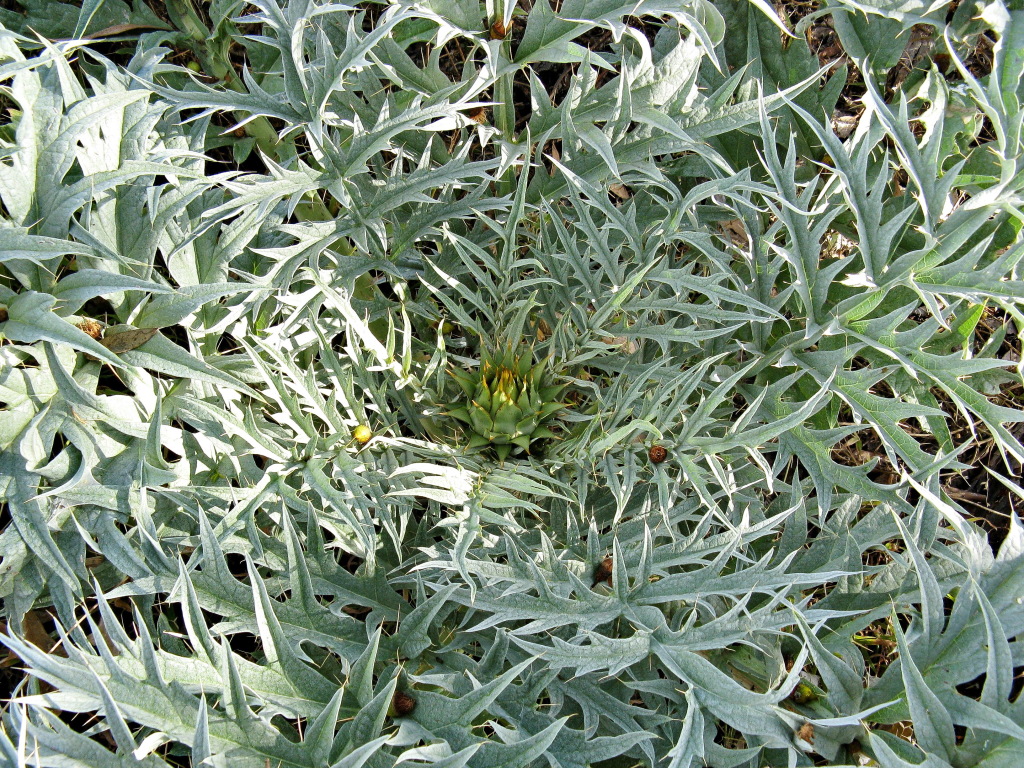Cynara cardunculus subsp. flavescens
WiklundStout herb to 2 m high; stems branched, striate, sparsely cobwebbed. Leaves greyish-green, sparsely cobwebbed above, whitish and densely cobwebbed below; basal leaves lanceolate to ovate in outline, to 90 cm long and 30 cm wide, pinnatisect with pinnatifid segments, each spine-tipped, petiolate; cauline leaves similar but smaller, ultimately sessile. Capitula 4–10 cm diam.; peduncles 1–6 cm long; involucral bracts lanceolate to elliptic, glabrous, often purplish; outer involucral bracts with an erect or spreading apical spine; inner involucral bracts with an ovate, often mucronate apical appendage. Florets blue to purplish or white. Cypselas 6–8 mm long, 4-sided, shiny, brown or black with longitudinal streaks; pappus 2.5–4 cm long. Flowers Nov.–Feb.
MuM, VVP, VRiv, MuF, GipP, OtP, Gold, CVU, DunT, NIS, EGU, HSF, HNF. Also naturalised WA, SA, Qld, NSW, Tas. Scattered mainly through central Victoria, particularly common on clay soils of the Volcanic Plain where abundant on roadsides, wasteland and poorer pastures. Declared a noxious weed in Victoria.
The Globe Artichoke (Cynara scolymus L.) is probably derived (through human selection) from non-spinose forms of C. cardunculus. It has been used as a food plant since pre-Roman times.
 Spinning
Spinning


